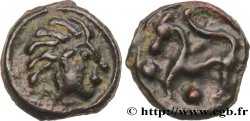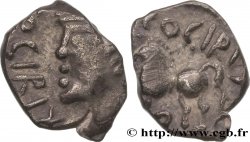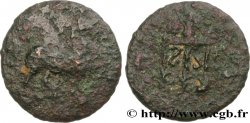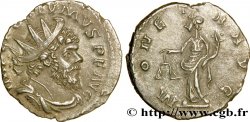Live auction - bfe_948874 - MURBACH AND LURE - JOHANN-RUDOLF STOER OF STOERENBOURG Demi-thaler
You must signin and be an approved bidder to bid, LOGIN TO BID. Accounts are subject to approval and the approval process takes place within 48 hours. Do not wait until the day a sale closes to register. Clicking on "BID" constitutes acceptance of the terms of use of cgb.fr private live auctions.
Bids must be placed in whole Euro amounts only. The sale will start closing at the time stated on the item description; any bids received at the site after the closing time will not be executed. Transmission times may vary and bids could be rejected if you wait until the last second. For further information check the Live auction FAQ
All winning bids are subject to a 18% buyer’s fee.
All winning bids are subject to a 18% buyer’s fee.
| Estimate : | 4 600 € |
| Price : | 3 400 € |
| Maximum bid : | 3 400 € |
| End of the sale : | 24 September 2024 17:45:32 |
| bidders : | 2 bidders |
Type : Demi-thaler
Date: 1544
Mint name / Town : Saint-Amarin
Metal : silver
Diameter : 34 mm
Orientation dies : 10 h.
Weight : 14,14 g.
Rarity : R2
Coments on the condition:
Ce demi-thaler est frappé sur un flan large présentant un éclatement. Quelques petites faiblesses de frappe. Monnaie recouverte d’une patine grise
Catalogue references :
Predigree :
Monnaie provenant de la collection Jean-Marie Dubel
Obverse
Obverse legend : + IOES’+ RVD’+ D’+ G’+ MVRBAC’ ET+ LVTREN’ ABB.
Obverse description : Écu sous une mitre reposant sur deux crosses posées en sautoir.
Obverse translation : (Jean-Rodolphe, par la grâce de Dieu, abbé de Murbach et Lure).
Reverse
Reverse legend : CAROLVS+ V+ ROM+ IMPERATOR+ AVG+ 1544.
Reverse description : Aigle impériale bicéphale couronnée.
Reverse translation : (Charles V, empereur romain et auguste).
Commentary
Jean-Paul Divo dans son ouvrage consacré aux monnaies des princes-abbés de Murbach et Lure (1544-1667) indique que ce demi-thaler au millésime 1544 est assez rare (RR). Première année de frappe pour les demi-thalers. Jean-Paul Divo précise “Bien qu’une émission de demi-talers avait été prévue dès le début du monnayage abbatial, très peu de pièces de ce nominal ont été émises, elles sont toutes très rares”.








 Report a mistake
Report a mistake Print the page
Print the page Share my selection
Share my selection Ask a question
Ask a question Consign / sell
Consign / sell










